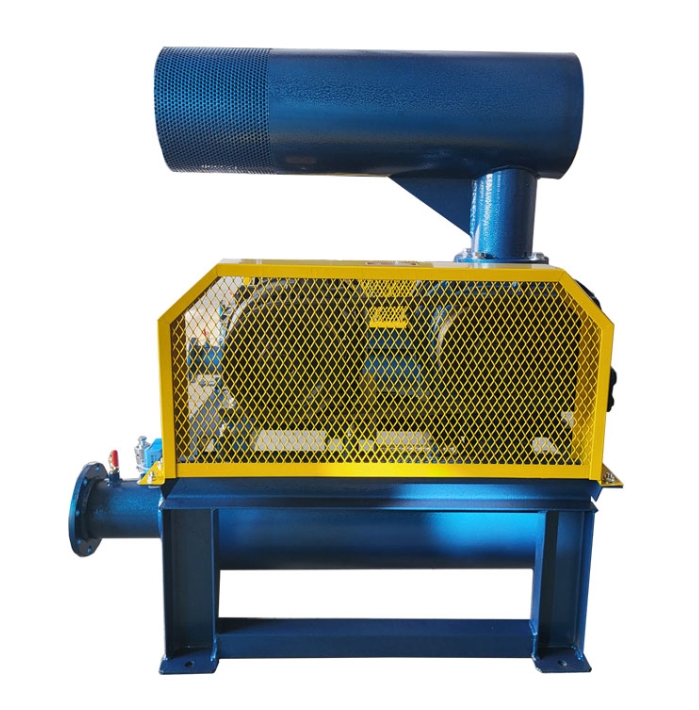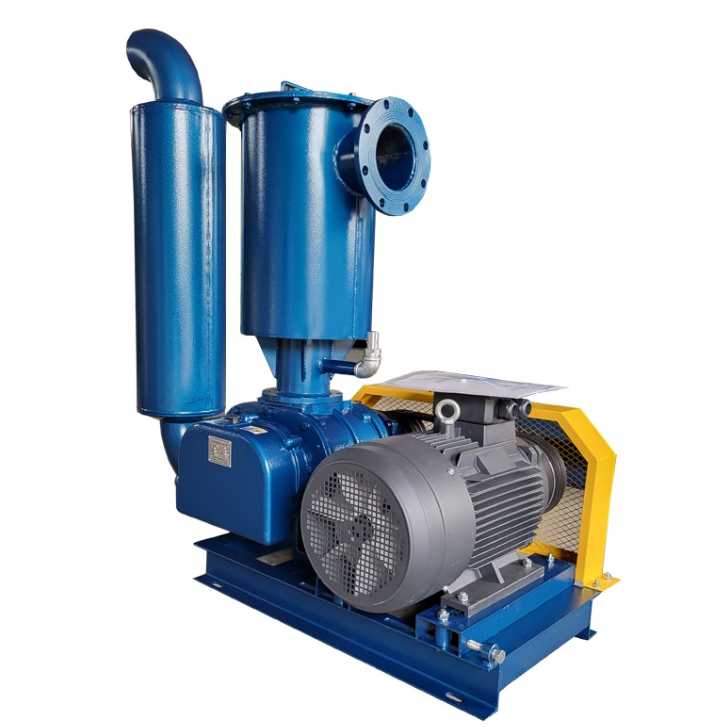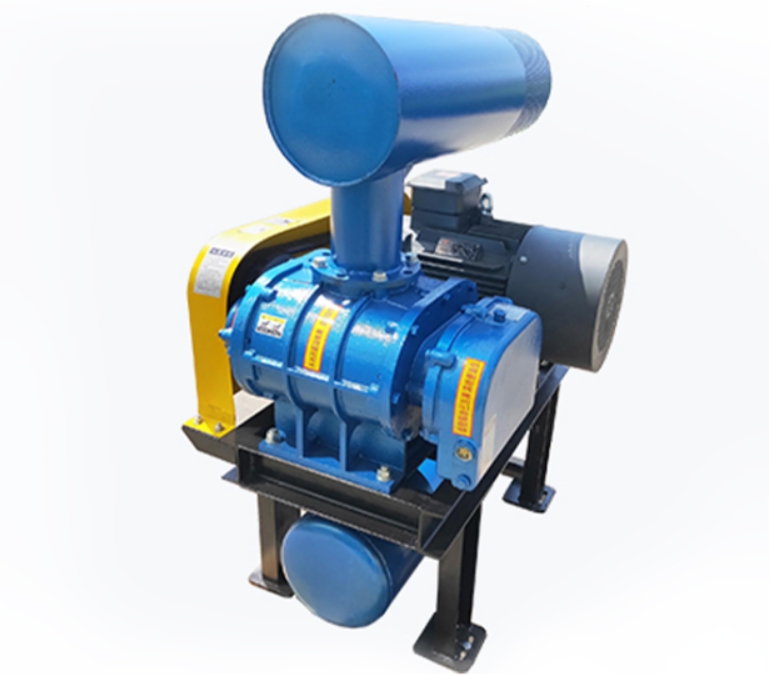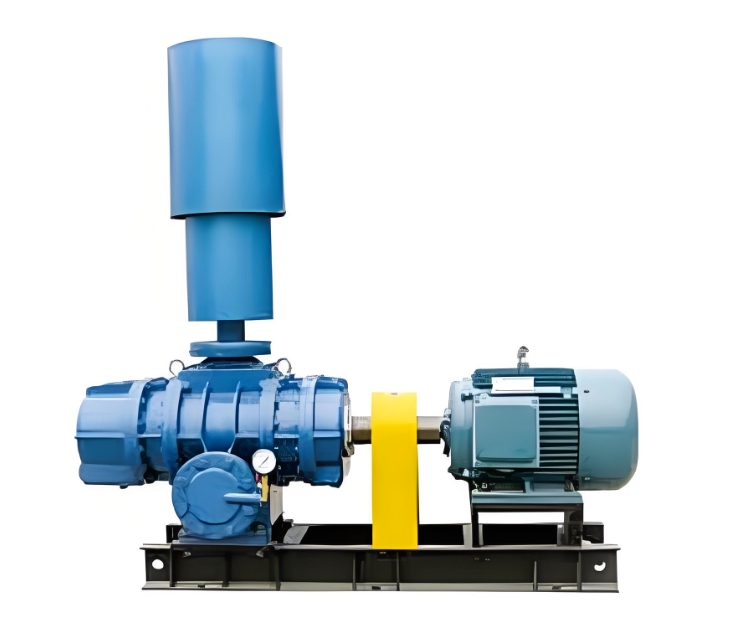**Detailed explanation of the relationship between Roots blower speed and air volume**
There is a direct mathematical relationship between the speed and air volume of a Roots blower, but in actual operation, factors such as efficiency and system resistance also need to be considered. Here is a professional analysis:
---

**1、 Theoretical relationship formula**
**The linear relationship between air volume (Q) and rotational speed (n)**
\[ Q = k \times n \]
-Q: Airflow (m3/min)
-* * n * *: Speed (rpm)
-* * k * *: Fan displacement coefficient (determined by impeller size and profile, usually a fixed value)
**Example * *:
At 1450rpm, the airflow of a certain Roots blower is 10m3/min. When the speed rises to 1750rpm:
\[ Q_{new} = 10 \times (1750/1450) ≈ 12.07 \, \text{m3/min} \]
---
**2、 Factors affecting actual operation**
1. * * Loss of volumetric efficiency**
-When the speed is too high (>2000rpm), internal leakage increases (gap backflow), and the actual air volume growth is lower than the theoretical value.
-* * Typical efficiency range * *: 65~85 (low-speed fans have higher efficiency).
2. * * System resistance (back pressure)**
-The air volume of Roots blower is almost unaffected by pressure (hard characteristic), but high resistance can cause:
-Motor overload (check if the current exceeds the standard).
-Temperature rise (may trigger overheating protection).
3. * * Air intake conditions**
-The higher the altitude or the higher the intake temperature, the lower the actual air volume (resulting in a decrease in air density).
-* * Correction formula * *:
\[Q_ {\ text {actual}}=Q_ {\ text {calibration}} \ times \ frac {P_ {\ text {local}}} {P_ {\ text {standard}}} \ times \ frac {T {\ text {standard}}} {T {\ text {local}}} \]
(P: Air pressure, T: Temperature)
---
**3、 The Golden Rule for Speed Selection**
|* * Speed Range * * | * * Applicable Scenarios * * | * * Advantages and Disadvantages * *|
|----------------|-----------------------------|----------------------------|
|* * High speed * * | Short term operation, limited space, low-cost requirements | Large air volume, small size<br>Fast wear and high noise|
|* * Low speed * * | Continuous operation, high pressure, long lifespan requirements | Long lifespan, high efficiency<br>High cost, large volume|
**Suggestion * *:
-* * Economic speed * *: 1000~1500rpm (balanced life and performance).
-* * Maximum speed * *: Do not exceed the rated speed on the nameplate (usually ≤ 3000rpm).
---
**4、 Precautions for variable frequency speed regulation**
1. * * Speed regulation range * *:
-It is allowed to adjust within the rated speed range of * * 30~110 * * (exceeding the range requires confirmation from the manufacturer).
2. * * Speed limit * *:
-When the speed is below 500rpm, the lubricating oil cannot splash effectively (forced lubrication needs to be used instead).
3. * * Energy saving calculation * *:
-The power is proportional to the cube of the rotational speed, and reducing the speed by 20 can save about 50% electricity!
\[ P \propto n^3 \]
---
**5、 Selection calculation case**
**Requirement * *: The conveying of powder requires an air volume of 8m3/min, a pressure of 49kPa, and 24-hour operation.
**Step * *:
1. Choose a low-speed model (such as 980rpm) to extend its lifespan.
2. Calculate displacement coefficient:
\[ k = Q/n = 8/980 ≈ 0.00816 \, \text{m3/r} \]
3. If you need to accelerate to 1200rpm:
\[ Q_{new} = 0.00816 \times 1200 ≈ 9.8 \, \text{m3/min} \]
4. Verify if the motor power matches (original power x (1200/980) 3).
---
**6、 Maintenance and monitoring**
1. * * Regular Inspection * *:
-Measure the outlet air volume with an anemometer every month and compare it with the theoretical value (if the deviation is greater than 10, maintenance is required).
2. * * Abnormal diagnosis * *:
-* * Decreased air volume * *: First check if the filter/pipeline is blocked, and then measure if the gap exceeds the standard.
-Speed fluctuation: Check the output of the frequency converter or belt slippage.
---
**Summary * *:
The air volume of Roots blower can be linearly adjusted by speed, but efficiency, pressure, and lifespan need to be considered comprehensively. Variable frequency control is an ideal way to regulate air volume, but it is necessary to avoid exceeding the operating limit! When selecting, it is recommended to provide complete operating parameters and have the manufacturer match the speed.





